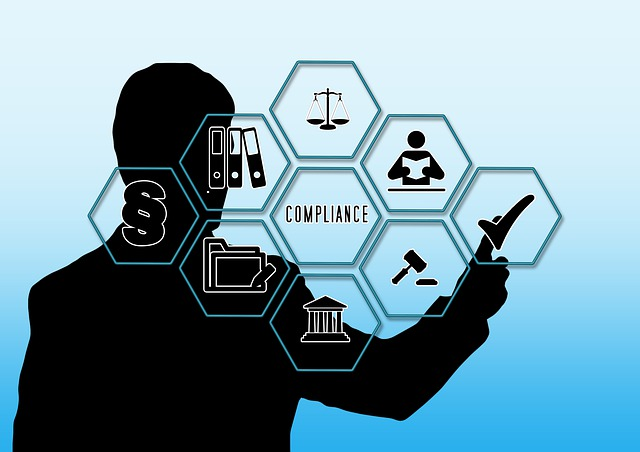What is Regulatory Compliance? Regulatory compliance refers to the process of adhering to laws,...
Certificate in Compliance Management
Compliance management course overview:
This compliance management course is designed to provide you with a comprehensive understanding of how to effectively manage compliance within an organization. You will learn about the various compliance requirements that organizations must adhere to, as well as the best practices for developing and implementing compliance programs.
In addition, you will gain an understanding of the role of internal audit in compliance management, and how to use data analytics to improve compliance. This course will also cover the importance of ethics and culture in compliance management, and how to deal with compliance risks. Upon completion of this course, you will be able to develop and implement an effective compliance management program within your organization.
Who is this course for?
This course is designed for anyone who wants to learn about compliance management, or who is responsible for managing compliance within an organization. This may include compliance officers, managers, and executives.
What will you learn in this course?
- The various compliance requirements that organizations must adhere to
- The best practices for developing and implementing compliance programs
- The role of internal audit in compliance management
- How to use data analytics to improve compliance
- The importance of ethics and culture in compliance management
- How to deal with compliance risks
What are the requirements for this course?
There are no prerequisites for this course. However, it would be beneficial if you have some experience working in compliance or management.
How will this course benefit you?
Upon completion of this course, you will be able to develop and implement an effective compliance management program within your organization. This will help you to ensure that your organization is compliant with all relevant regulations, and that you are able to effectively manage any compliance risks.
Course Outline:
Module 1: Introduction to Compliance Management
In this module, you will learn about the basics of compliance management. You will be introduced to the various compliance requirements that organizations must adhere to, as well as the best practices for developing and implementing compliance programs.
Module 2: The Role of Internal Audit in Compliance Management
In this module, you will learn about the role of internal audit in compliance management. You will gain an understanding of how internal audit can be used to improve compliance within an organization.
Module 3: Using Data Analytics to Improve Compliance
In this module, you will learn about how to use data analytics to improve compliance. You will be introduced to the various data analytics tools that can be used for compliance purposes, and you will learn how to use them to effectively manage compliance risks.
Module 4: Ethics and Culture in Compliance Management
In this module, you will learn about the importance of ethics and culture in compliance management. You will gain an understanding of how to create and maintain a culture of compliance within an organization.
Module 5: Compliance Risks
In this module, you will learn about compliance risks. You will be introduced to the various types of compliance risks, and you will learn how to effectively manage them.
PROGRAM SNEAK PEAK & SMALL SAMPLE
What is Compliance Management?
Compliance management is the process of ensuring adherence to laws, regulations, policies, procedures, and ethical standards within an organization. There are many compliance risks that organizations face, and these risks can come from a variety of sources. For example, regulatory changes can create new compliance risks, as can changes in business practices or processes. Additionally, organizations may face compliance risks associated with their relationships with other entities, such as vendors, suppliers, or customers.
Compliance management is a critical function for all organizations. It helps to ensure that the organization is operating in a legal and ethical manner, and that it is meeting its obligations to stakeholders. Additionally, compliance management can help to protect the organization from potential financial penalties or damages that could result from non-compliance.
Compliance management is typically overseen by a compliance officer or team. This team is responsible for developing and implementing compliance policies and procedures, monitoring compliance with these policies and procedures, and investigating any potential violations of the policies. The compliance team may also be responsible for providing training on compliance-related topics, and for conducting audits of the organization’s compliance program.
Why is Compliance Management Important?
Compliance management is important for a variety of reasons. First, it helps to ensure that the organization is operating in a legal and ethical manner. This is important from both a moral standpoint and from a business standpoint. Additionally, compliance management can help to protect the organization from potential financial penalties or damages that could result from non-compliance. Finally, compliance management is important because it helps to ensure that the organization is meeting its obligations to stakeholders.
What is compliance management example?
There are a number of compliance management examples, but here is one to get you started. A company that manufactures parts for aircraft engines must follow very specific quality control procedures. If they do not, the parts they produce could fail while in use, causing serious injury or even death. The company's compliance management system ensures that these procedures are followed so that the parts they produce meet the required standards.
Another compliance management example would be a company that provides financial services. This company would need to follow certain regulations in order to protect its clients' information and money. The compliance management system would ensure that these regulations are followed in order to maintain the trust of their clients.

How to Ensure Compliance?
There are a number of steps that organizations can take to ensure compliance with applicable laws, regulations, policies, and procedures. First, organizations should develop and implement policies and procedures designed to promote compliance. Additionally, organizations should provide training on compliance-related topics to employees, contractors, and other individuals who interact with the organization. Furthermore, organizations should conduct audits of their compliance program on a regular basis. Finally, organizations should have a process in place for investigating and responding to potential compliance violations.
What are the Consequences of Non-Compliance?
The consequences of non-compliance can be significant. Organizations may face financial penalties, damages, or other legal consequences as a result of non-compliance. Additionally, non-compliance can damage the organization’s reputation and jeopardize its relationships with stakeholders.
What are Some Common Compliance Risks?
There are a variety of compliance risks that organizations face. These risks can come from a variety of sources, such as regulatory changes, changes in business practices or processes, or relationships with other entities. Some common compliance risks include:
• Regulatory changes
• Changes in business practices or processes
• Relationships with vendors, suppliers, or customers
• Use of new technologies
• Expansion into new markets
• Mergers and acquisitions
• Financial reporting
• Environmental compliance
• Health and safety compliance
• Data privacy and security compliance
Each of these risks can pose a significant compliance challenge for organizations. As such, it is important for organizations to have a comprehensive compliance management program in place that can address these risks.

What are Some Best Practices for Compliance Management?
There are a number of best practices that organizations can follow to ensure an effective compliance management program. These best practices include:
• Establishing a culture of compliance:
Organizations should make compliance a priority at all levels of the organization. This can be accomplished by communicating the importance of compliance to employees, contractors, and other individuals who interact with the organization. Additionally, organizations should provide training on compliance-related topics.
• Developing and implementing policies and procedures:
Organizations should have policies and procedures in place that promote compliance with applicable laws, regulations, and policies. These policies and procedures should be designed to meet the specific needs of the organization.
• Conducting audits:
Organizations should conduct audits of their compliance program on a regular basis. These audits should be conducted by an independent party.
• Investigating and responding to potential compliance violations:
Organizations should have a process in place for investigating and responding to potential compliance violations. This process should include a review of the facts, an analysis of the applicable laws and regulations, and a determination of the appropriate course of action.
Organizations should implement these best practices to ensure an effective compliance management program. By doing so, organizations can minimize the risk of non-compliance and the associated consequences.
What is Compliance Management Software?
Compliance management software is a tool that helps organizations manage their compliance program. This type of software typically includes a range of features, such as policy and procedure management, training management, audit management, and investigation management. Additionally, compliance management software often includes reporting capabilities that help organizations track their compliance program.
Compliance management software can be a valuable tool for organizations. This type of software can help organizations streamline their compliance program and improve their overall compliance posture. Additionally, compliance management software can help organizations save time and money by reducing the need for manual processes.
What is a Compliance Officer?
A compliance officer is an individual who is responsible for overseeing an organization’s compliance program. The compliance officer’s duties typically include developing and implementing policies and procedures, conducting audits, investigating potential violations, and responding to compliance issues. Additionally, thecompliance officer often serves as a liaison between the organization and regulatory agencies.
The compliance officer is a critical role in an organization’s compliance program. As such, organizations should ensure that the compliance officer has the necessary skills and knowledge to effectively perform their duties. Additionally, organizations should provide the compliance officer with the resources needed to successfully carry out their responsibilities.
What do Compliance Managers Do?
Compliance managers are responsible for overseeing an organization’s compliance program. The compliance manager’s duties typically include developing and implementing policies and procedures, conducting audits, investigating potential violations, and responding to compliance issues. Additionally, the compliance manager often serves as a liaison between the organization and regulatory agencies.
The compliance manager is a critical role in an organization’s compliance program. As such, organizations should ensure that the compliance manager has the necessary skills and knowledge to effectively perform their duties. Additionally, organizations should provide the compliance manager with the resources needed to successfully carry out their responsibilities.

What is a Compliance Management Program?
A compliance program is a set of policies and procedures designed to ensure that an organization complies with applicable laws and regulations. A compliance management program typically includes a range of features, such as policy and procedure management, training management, audit management, and investigation management. Additionally, compliance programs often include reporting capabilities that help organizations track their compliance posture.
Compliance management programs can be a valuable tool for organizations. This type of program can help organizations streamline their compliance program and improve their overall compliance posture. Additionally, compliance management programs can help organizations save time and money by reducing the need for manual processes.
What is a Compliance Audit?
A compliance audit is an evaluation of an organization’s compliance program. The purpose of a compliance audit is to assess the effectiveness of the program and identify any areas of improvement. Compliance audits are typically conducted by external auditors, such as consultants or accounting firms.
What is a Compliance Investigation?
A compliance investigation is an inquiry into potential violations of laws or regulations. Compliance investigations are typically conducted by regulatory agencies, such as the Securities and Exchange Commission (SEC) or the Department of Justice (DOJ). Investigations may also be conducted by an organization’s internal compliance department.
What are Compliance Policies and Procedures?
Compliance policies and procedures are designed to ensure that an organization complies with applicable laws and regulations. Policies and procedures typically cover a range of topics, such as anti-corruption, anti-money laundering, data privacy, and export control. Compliance policies and procedures typically set forth the standards that an organization must meet in order to comply with the law.
What is a Compliance Risk Assessment?
A compliance risk assessment is an evaluation of an organization’s compliance risks. The purpose of a compliance risk assessment is to identify potential areas of non-compliance and assess the likelihood and impact of these risks. Compliance risk assessments are typically conducted by external consultants or accounting firms.
What is a Compliance Training?
Compliance training is designed to educate employees on an organization’s compliance policies and procedures. Compliance training typically covers a range of topics, such as anti-corruption, anti-money laundering, data privacy, and export control. compliance training can be delivered through a variety of methods, such as classroom training, online courses, or webinars.
What is compliance issue management?
Compliance issue management is the process of identifying, investigating, and resolving compliance issues. Issue management typically includes a range of activities, such as policy development, training delivery, auditing, and investigations. Additionally, compliance issue management often includes reporting capabilities that help organizations track their compliance posture.
What are some compliance management challenges?
Some common compliance management challenges include:
- Ensuring that employees are aware of and compliant with applicable laws and regulations
- Developing and implementing policies and procedures that meet regulatory requirements
- Conducting compliance risk assessments to identify potential areas of non-compliance
- Training employees on compliance policies and procedures
- Investigating potential violations of laws or regulations
- Reporting compliance data to regulatory agencies

Glossary of Useful terms:
Compliance requirements: laws, rules, or regulations that an organization must follow.
Compliance program: a set of policies and procedures designed to ensure that an organization complies with applicable laws and regulations.
Compliance risk: the risk that an organization will violate a law or regulation.
Compliance audit: an evaluation of an organization’s compliance program.
Compliance investigation: an inquiry into potential violations of laws or regulations.
Compliance policies and procedures: policies and procedures designed to ensure that an organization complies with applicable laws and regulations.
Compliance training: training that covers an organization’s compliance policies and procedures.
Compliance issue management: the process of identifying, investigating, and resolving compliance issues.
Business functions: aspects of an organization’s operations that are necessary to achieving its strategic objectives.
Periodic compliance audits: audits that are conducted on a regular basis, typically once per year.
Ad hoc compliance audits: audits that are conducted as needed, rather than on a regular schedule.
External compliance audits: audits that are conducted by an outside party, such as a consulting firm or accounting firm.
Internal compliance audits: audits that are conducted by an organization’s internal auditors.
Root cause analysis: an investigation into the underlying causes of a problem.
Corrective action plan: a plan of action designed to address deficiencies identified in a compliance audit.
Remediation: the process of addressing deficiencies identified in a compliance audit.
Preventative measures: measures designed to prevent compliance problems from occurring in the first place.
Detective controls: measures that are designed to detect compliance problems after they have occurred.
Corrective controls: measures that are designed to correct compliance problems after they have been detected.
Preventative and Detective Controls:
- Employee training
- Compliance policy development
- Implementation of compliance procedures
- Compliance monitoring
- Auditing
- Reporting of compliance data internally and to regulators
- Investigation of potential compliance violations.
Corrective Controls:
- Root cause analysis
- Corrective action plans
- Remediation.
Security controls: measures designed to protect an organization’s information and systems from unauthorized access, use, or disclosure.
Physical security controls: measures that are designed to protect an organization’s physical premises and assets from unauthorized access, use, or damage.
Compliance management standards: voluntary standards that provide guidance on compliance management practices.
Compliance management plan: a document that outlines an organization’s compliance management program.
Compliance manager: the individual responsible for overseeing an organization’s compliance program.




